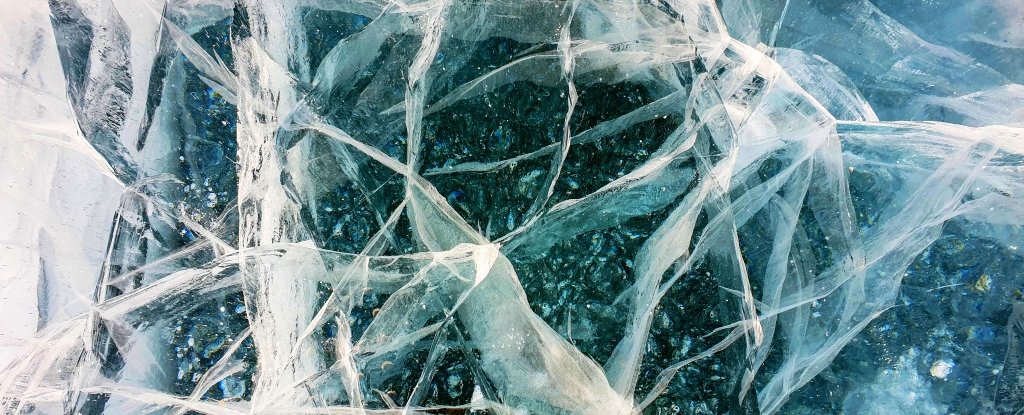
Not all water ice is the same. Trapped inside, the arrangement of molecules varies considerably, based on the pressure and temperature conditions under which it forms.
We knew 18 of these different phases of ice, some of which occur naturally, others only under laboratory conditions.
Three years ago, a team of researchers modified one of the existing ice structures and transformed it into a form they called ice β-XV. Now members of that team have determined the exact crystal structure, answered questions about how it is formed, and given it the designation Ice XIX.
This discovery could help us better understand how ice forms and behaves in alien conditions very different from those on Earth.
The ice you see in the freezer, or falling from the sky like snowflakes or hailstones, is the most common natural ice on Earth. This is called ice I and the oxygen atoms are arranged in a hexagonal grid. However, the structure is geometrically frustrated, with the hydrogen atoms much more disordered.
When ice I is cooled in a certain way, in addition to the oxygen atoms, the hydrogen atoms can also be periodically ordered. This is how scientists can create in a lab different phases of ice that have much more ordered crystalline molecular lattices than their disordered parent forms.
A team of physical chemists at the University of Innsbruck in Austria has been working with phase ice VI for some time. This is one of the forms of ice that occurs in nature, but only at very high pressures that are 10,000 times higher than the atmospheric pressure at sea level (about 1 gigapascal), as found in the Earth’s mantle, or wrapped around the core from Saturn’s moon Titan.
Like ice I, ice VI is relatively disordered. The hydrogen-ordered form, Ice XV, was only discovered about a decade ago. It is made by cooling the ice to below 130 Kelvin (-143 degrees Celsius, -226 degrees Fahrenheit) at a pressure of about 1 gigapascal.
By changing this process, the researchers created a new phase of ice a few years ago. They slowed the cooling down to below 103 Kelvin and increased the pressure to 2 gigapascals. This yielded a second arrangement of hydrogen molecules that differs from ice XV, which they called ice β-XV.
Validating that the ice was a separate phase was a separate hurdle, in which the normal water had to be replaced with ‘heavy’ water. Normal hydrogen has no neutrons in the nucleus. Heavy water, on the other hand, is based on deuterium, a form of hydrogen with one neutron in the core.
To determine the arrangement of atoms in a crystal lattice, scientists have to scatter neutrons from nuclei so that normal hydrogen atoms don’t intersect it.
“Unfortunately, this also changes the timescales for ordering ice cream,” said physical chemist Thomas Loerting from the University of Innsbruck.
“But PhD candidate Tobias Gasser then had the crucial idea to add a few percent of normal water to the heavy water – which turned out to speed up the order enormously.”
This allowed the team to obtain the neutron data they needed to assemble the crystal structure. As they thought, it differed from Ice XV, giving it an official place as the nineteenth known stage, Ice XIX.
This makes the pair of siblings – the first known to have the same oxygen lattice structure, but with different arrangements of hydrogen atoms.
“This also means that it will now be possible for the first time to realize the transition between two ordered ice shapes in experiments,” says Loerting.
The research is published in Nature Communications